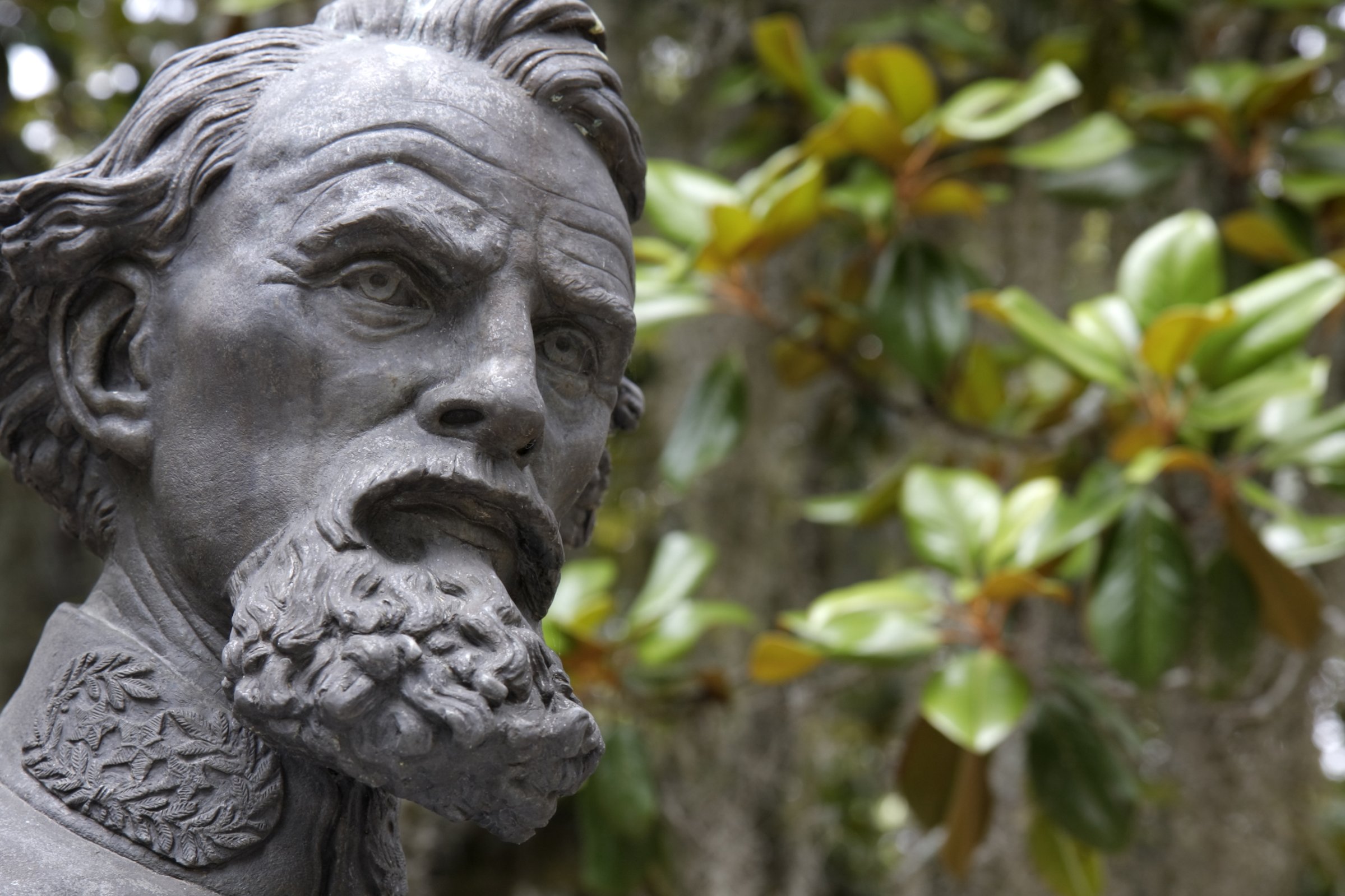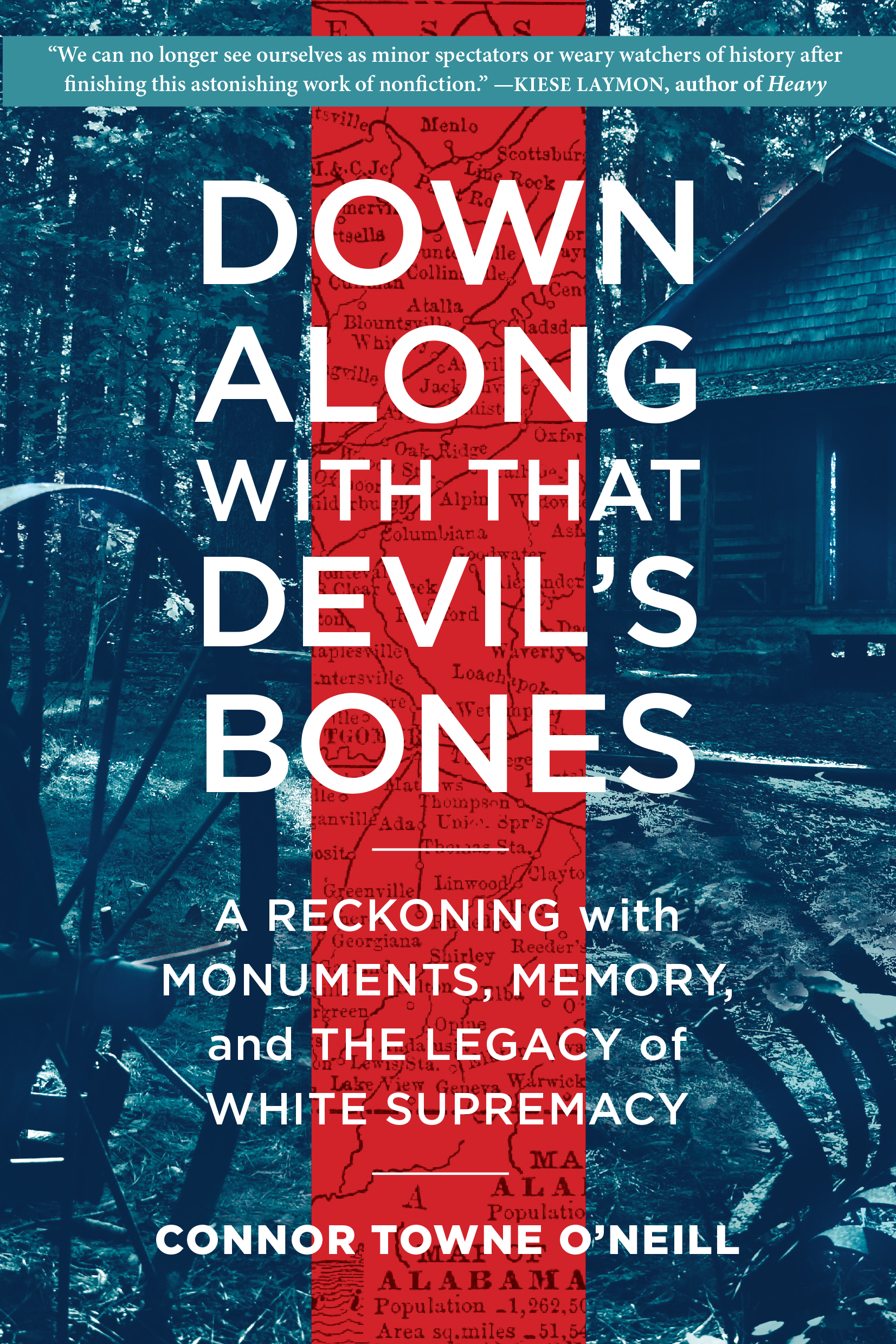
Confederate General Nathan Bedford Forrest died in 1877, yet the slave trader and Klan leader still haunts the American landscape. There’s a statue of him overlooking a cemetery in Rome, Ga., and a bust surveying the Tennessee state capitol. A county in Mississippi, a city in Arkansas and a state park in Tennessee all bear his name, along with many streets and schools and buildings. There are more monuments to Forrest in his home state of Tennessee than all three of the state’s presidents—Andrew Jackson, Andrew Johnson and James Polk—combined. And Monday, on what would be Forrest’s 199th birthday, Tennessee will observe Nathan Bedford Forrest day.
For the last five years, I’ve been chasing Forrest’s memory across the country, trying to figure out what it means for Americans to still honor him in 2020. That journey started back in 2015, when President Obama came to Selma, Ala., to mark the 50th anniversary of Bloody Sunday, the day Alabama police officers beat, whipped and tear-gassed hundreds of black demonstrators on Selma’s Edmund Pettus Bridge. That morning, the usually sleepy city was constricted with cars. I was in Selma to report on the anniversary, when a search for free parking brought me to Old Live Oak Cemetery, just a few blocks from the bridge. Old Live Oak is one of those cemeteries that is so expansive it has its own system of roads. It’s also a bingo board of Old South cliches. The cemetery is shaded by centuries-old live oaks and magnolias bearded by Spanish moss, and dappled sunlight spilled across the mausoleums. And all around there were signs to alert visitors that Confederate Memorial Circle was closed for maintenance: Do Not Trespass.
I was already running late, but those signs caught my eye. At the center of the Circle, a woman was resealing the brick surrounding a pillar topped by a generic Confederate soldier. Next to her, a German shepherd sat at attention. Workers in jeans and cut-off shirts were putting up a wrought iron fence around an old cannon, and on the far side of the circle stood a tall granite pedestal missing a statue.
I got out of my car and approached.
That empty pedestal, the woman told me, had once borne a bronze bust of Confederate General Nathan Bedford Forrest, but exactly three years earlier, on the weekend of the 47th anniversary of Bloody Sunday, under cover of darkness, the statue had vanished. The theft had sparked a heated years-long battle over both a replacement statue and the very ownership of Confederate Memorial Circle. Finally, after protests and lawsuits and city council showdowns, the Friends of Forrest (as they call themselves) came away triumphant, with a deed to the land and plans to replace the statue. The time was nigh to unveil their new Forrest monument.
I spent the rest of the day reporting on the anniversary, walking across the bridge, and listening to a speech considered one of President Obama’s best, but all the while, in the back of my head, I wondered what it meant to put up a Confederate statue in 2015.
Get your history fix in one place: sign up for the weekly TIME History newsletter
In the weeks after the Bloody Sunday anniversary, I began to experience a sort of Baader-Meinhof phenomenon with Nathan Bedford Forrest, seeing him everywhere, now that I knew to look. That goateed scowling face pinned to the corkboard in the gas station where I would often stop for breakfast? Oh, so that’s Forrest. The residential street in East Nashville where I parked my car for a weekend of honky-tonking? Forrest Ave. That weird, cordoned-off mound on the University of Alabama’s quad that I hustled past late to fiction workshop every Monday? The burnt wreckage of the old campus set ablaze by a Union general before he faced Forrest in Selma.
In life, I learned, Forrest was a hard-bitten striver. Born into a dirt-floor poverty on the Tennessee frontier, he became a wealthy slave trader. Forrest went into business during the “Second Middle Passage” — the era between the outlawing of the transatlantic slave trade in 1808 and the outbreak of the Civil War, when an estimated one million plus enslaved men and women were sold from the Upper South to the rapidly expanding plantations of the Deep South. “He wanted a way to prosper quickly,” Forrest biographer Jack Hurst writes, “and at that time and place there was probably no more profitable field than slave-dealing.” So Forrest signed onto America’s Faustian founding bargain, making a fortune selling enslaved people down the river from his Memphis slave market. When the war came, he used that fortune to equip a cavalry troop, and fought so viciously in defense of the institution that Union General William Tecumseh Sherman called him “That Devil,” while his Confederate colleagues dubbed him the “Wizard of the Saddle.” The late Southern historian and novelist Shelby Foote named him one of “two absolute geniuses to emerge from the war.” But he also became known as “The Butcher of Fort Pillow” after he oversaw the slaughter of more than one hundred surrendering black soldiers. By the time he disbanded his troops outside Selma in 1865, he had become the most promoted soldier, north or south, having risen from the rank of private to lieutenant general. After the war, Forrest made occasional efforts at reconciliation, telling his troops they had been good soldiers and they could be good citizens, and, late in life, he addressed an African American social club and experienced a come-to-Jesus moment. But his other post-war activities proved far more consequential and enduring: he was an early adopter of convict leasing and lent his preferred nom de guerre to the newly founded Ku Klux Klan, serving as its first figurehead, the Grand Wizard.
While Robert E. Lee might seem the obvious candidate for a Confederate monument, it’s Forrest’s symbolic afterlife that is perhaps the better bellwether for how we arrived at our current debates over Civil War monuments and memory. Lee was part of the planter class, a “First Family” of Virginia, the avatar of the Southern Gentleman and a graduate of West Point, while Forrest was a quick-tempered man of action, disdainful of book learning. He’s a folk hero, both Everyman and Ubermensch. And Forrest’s myth is stoked by thoughts of what might have been. Because Forrest enlisted as a private and fought in the often-neglected western theater, his skills as a cavalry commander were overlooked for much of the war. But what if Forrest had been given a more prominent role? Could the South have won? He is the Confederate counterfactual, the great hope of the Monday morning rebel quarterback who refuses to accept the war’s end or outcome. And so, through each generation Forrest’s legend has only grown.
The newest addition to the cache of Forrest monuments came just two months after the Bloody Sunday anniversary in 2015. It was another still and cloudless day in Selma when the Friends of Forrest unveiled their replacement bust. A crowd of onlookers, nearly one hundred in all, burst into applause. One imitated the shrill yawp of the rebel yell.
Three weeks later and some 500 miles away, on a humid and moonless night in June, 21-year-old Dylann Roof pulled into the parking spot closest to the door of Mother Emanuel AME Church in Charleston, S.C., and descended the stairs to the basement, where he prayed with, and then murdered, nine parishioners in an attempt to start a race war.
Forrest’s symbolic return to Selma, and Roof’s terrorism, became, for me, inextricable. And so, as activists mounted campaigns to remove Confederate monuments, I began to follow those aimed at Forrest specifically.
Confederate monuments seek to honor a figure from the past, yes, but they have just as much to say about the present. Monuments telescope the past into the present, seeking to immortalize figures from our past by keeping their image with us in the present. And the person being remembered is just as revealing as those who are doing the remembering. Confederate statues are both a tribute to a particular vision of the past and a reflection of who holds power in the present. So the campaigns to remove these statues had to contend with a contested figure from America’s past as well as systems of racial, economic, and political power in the present.
When I first started writing about Forrest, I conceived of myself as an outside observer. I would bear witness, document, report on the referendums on Forrest taking place in four cities. But I came to see a larger proxy war in the offing, one that engulfed the entire nation and one that implicated me.
Growing up white in America, whiteness often went without saying. But that’s precisely it: it goes without saying because white people don’t want to talk about whiteness, don’t want to see it, don’t want to think about what it means, where it came from, or why we seem to still need it. But as I charted the battles over Forrest’s monuments, I would come to see how whiteness operated — its prerogatives and its amnesia, its symptoms and its sickness. Whether I liked it or not, the Friends of Forrest were putting that monument up in my name too. To tell his story, I would have to revise the story I told about myself.

From Down Along With That Devil’s Bones by Connor Towne O’Neill ©2020 by Connor Towne O’Neill. Reprinted by permission of Algonquin Books of Chapel Hill. All rights reserved.
More Must-Reads from TIME
- Why Biden Dropped Out
- Ukraine’s Plan to Survive Trump
- The Rise of a New Kind of Parenting Guru
- The Chaos and Commotion of the RNC in Photos
- Why We All Have a Stake in Twisters’ Success
- 8 Eating Habits That Actually Improve Your Sleep
- Welcome to the Noah Lyles Olympics
- Get Our Paris Olympics Newsletter in Your Inbox
Contact us at letters@time.com